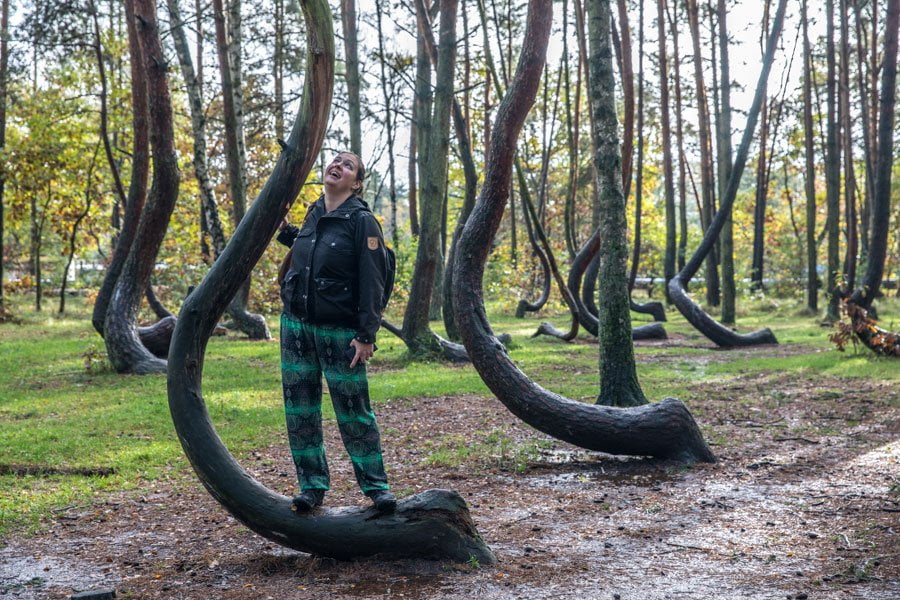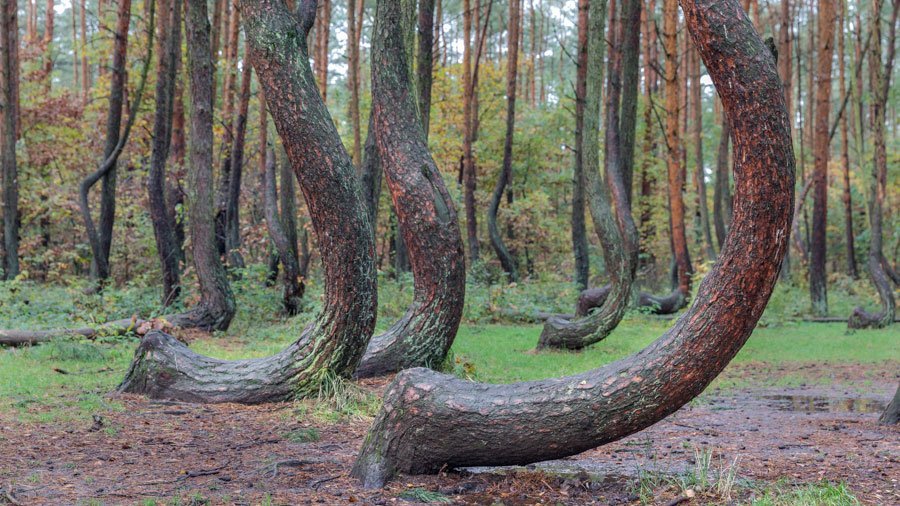"Dream, Dream, Dream! Conduct these dreams into thoughts, and then transform them into action."
- Dr. A. P. J. Abdul Kalam
"Dream, Dream, Dream! Conduct these dreams into thoughts, and then transform them into action."
- Dr. A. P. J. Abdul Kalam
5 Apr 2024
Locating Poland's Most Coolest Location ~ In Poland, amidst a forest of towering pines, an intriguing sight awaits curious onlookers: a cluster of approximately one hundred crooked pine trees stands in stark contrast to their straight-laced counterparts. There are perhaps one hundred crooked pine trees. The fact that the crooked one is surrounded by straight pine trees just serves to accentuate how strange this is. Further information about the trees may be found on a sign (available only in Polish). The uneven pine trees were planted in 1930, during the German occupation of this region of Poland. The trees veer abruptly northward at a slight elevation above the ground. From the base, the pine trees grow with a 90-degree sharp bend northward but then curve back to grow straight up into the sky. Despite the unnatural curves bending three to nine feet sideways at their bases, these trees are generally healthy and grow up to 50 feet tall. It appears surreal and interesting. In most cases, visitors had to touch a single tree to confirm its authenticity.
The Enigma Surrounding the Crooked Forest ~

( Source: Google Images)
The woodland is shrouded in so much mystery. It's nearly palpable in the air. It resembles a typical forest, except for around 100 trees that have altered the way trees should develop. It's even more awesome because no one knows for sure how this phenomenon originated! Numerous websites exist to discover the causes, but the variety of hypotheses on the crooked trees, or "Krzywy Las," is rather restricted.
Why Are The Trees Crooked?

( Source: Google Images)
The prevailing and most plausible explanation suggests that local farmers deliberately planted and shaped the trees during their initial planting in 1930. However, analysis indicates that the trees were approximately seven to ten years old when they underwent the force that caused their trunk curvature.
Were the farmers in the area purposefully changing the trees? Did the trees lean toward the north naturally? The town of Gryfino was largely abandoned between the early stages of World War II and the 1970s, so the people who lived there before the war and likely had the answer to the mystery of the Crooked Forest are probably no longer with us. Despite this, many have been searching for an answer to this mystery!
Into The Unknown ~
Magnificent natural formations may be found in every part of the earth. Some are widely recognized. Others are lurking in the deepest recesses of the seas and rainforests, unexplored. Certain occurrences are unique to distant and exotic locations. Few scientific procedures are so astounding that they almost defy belief. It's easy to overlook the extent to which the study of everyday bacteria has contributed to our fundamental understanding of biology. For example, most antibiotics were originally discovered in very innocuous soil microorganisms. It's quite likely that the astounding genetic diversity of the viral world contains amazing molecular components about which we now know nothing.
It is quite hard to overstate the importance of trees. Their appearance around 300 million years ago was a watershed in Earth's history, contributing to the transformation of its surface into a thriving animal paradise. Over the ages, trees have provided food, shelter, and care for innumerable animals, including our ancestors. Even though it's unusual for humans to live in trees, we can nonetheless thrive without them. There are presently about 3 trillion trees, transforming environments from old-growth woods to city streets. We tend to take trees for granted, even though we are deeply dependent on them.
Each year, humans remove millions of acres of forest, usually for short-term gain, even though doing so has long-term concerns including declining wildlife populations, desertification, and climate change. Though there is still more to be done, science has made significant progress in protecting sensitive forests and understanding the sustainable uses of tree resources.
''There are known knowns; there are things we know we know. We also know there are known unknowns; that is to say, we know there are some things we do not know. But there are also unknown unknowns — the ones we don't know we don't know.” – Donald Rumsfeld